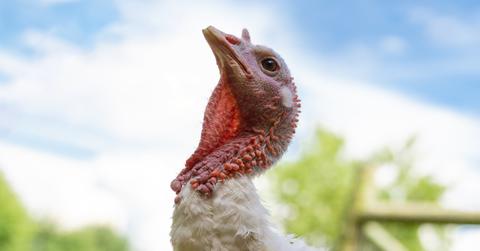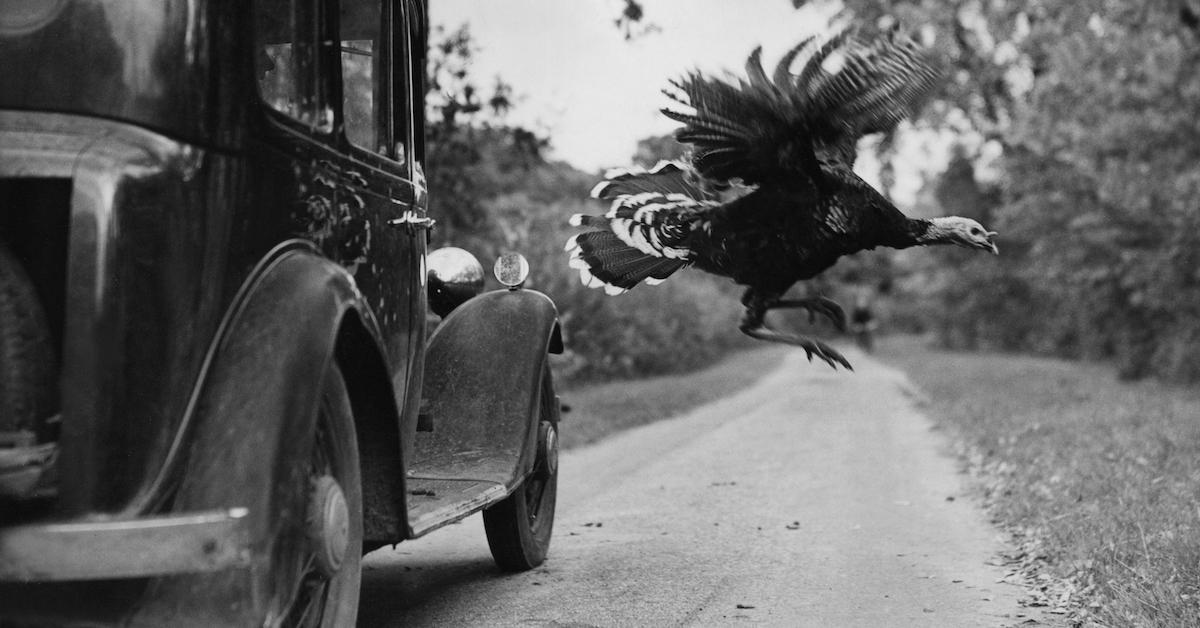10 Fun Facts About Turkeys, Who Are So Much More Than Meat
Published Nov. 22 2022, 1:02 p.m. ET

Thanksgiving, a holiday that is also known as “Turkey Day,” usually doesn’t do much to celebrate how awesome turkeys are. Instead, for most people, the holiday celebrates killing and eating turkeys. But these animals are worth so much more than the value they give to the food industry. In honor of Thanksgiving, we’re sharing some fun facts about turkeys.
Whether you are a vegan or vegetarian looking to arm yourself with knowledge for relatives who criticize you for leaving the turkey off your plate on Thanksgiving, or if you’re simply curious to know more about what makes turkeys special, here are 10 interesting and surprising facts about turkeys that prove they are so much more than meat.
Turkeys can fly.

Wild turkeys can fly for short distances, fairly close to the ground, up to 55 miles per hour, as per World Animal Protection.
However, turkeys who have been domesticated and/or are part of the food industry cannot fly. That’s because they have been bred to weigh much more than wild turkeys, and also because their living conditions are stressful and often crowded, impeding their natural abilities.
46 million turkeys are eaten for Thanksgiving every year.
And according to Sentient Media, the majority of these 46 million turkeys are raised in intensive factory farms.
The U.S. slaughters 223 million turkeys every year.
Overall, the U.S. farming system breeds and kills 223 million turkeys every year, as per Farm Sanctuary.
Turkey snoods contain a lot of meaning.
The “snood” refers to the long piece of colorful flesh that grows from a male turkey's forehead, often hanging down many inches, as per The Spruce. The snooze ranges widely in color, length, and shape — and that isn’t just for fun. The snood is actually one of the factors female turkeys consider in their sexual selection process!
Turkeys have superhuman eyesight.

According to World Animal Protection, a turkey’s vision is typically about three times stronger than a human with 20/20 vision. Not only that, but turkeys even have a 270-degree field of vision (compared to the average human’s 180-degrees total field of vision), which the National Audubon Society notes helps turkeys protect themselves from hunters and predators.
Turkeys can live up to 10 years in the wild.
The natural lifespan of a turkey is about 10 years; however, they are typically slaughtered for their meat when they are between 9 and 21 weeks old, as per the Vegetarian Society. Basically, they are babies. Just imagine a puppy dog or even a human baby in that age range.
You can learn a lot from a turkey’s poop.
Much like how new parents spend a lot of time analyzing their newborn’s poop, we can tell a lot about turkeys from their droppings. According to the U.S. Fish & Wildlife Service (USFWS), male turkeys’ droppings are shaped like the letter J, while female turkeys’ droppings are shaped like a spiral. And the bigger the droppings, the older the turkey. Seriously.
Turkeys rescued from slaughter can usually only live a few years.
When turkeys are rescued from slaughterhouses — such as the turkeys pardoned by the U.S. president — they do not live out their full lifespan, because they have been bred to grow large so quickly.
“If they get to a year old or so, they're lucky. But we've had them stay alive for over two years, two and a half,” poultry immunologist Rami Dalloul explained on The Kojo Nnamdi Show.
Turkeys have strong personalities and are maternal animals.
Whether or not you think turkeys are cute, they have great personalities. According to animal welfare organization FOUR PAWS International, turkeys are curious, inquisitive, intelligent, and playful, much like dogs and cats. They are also known to form bonds with other turkeys. Plus, turkeys are maternal animals — mother turkeys in the wild typically raise their chicks for about five months.
Turkeys have thousands of feathers.
As per the USFWS, an individual turkey has about between 5,000 and 6,000 feathers — fancy!
If these fun facts have inspired you to choose not to eat a turkey this Thanksgiving season, check out our guides to vegan Thanksgiving main dishes, meatless holiday roasts, and plant-based side dishes for Thanksgiving.